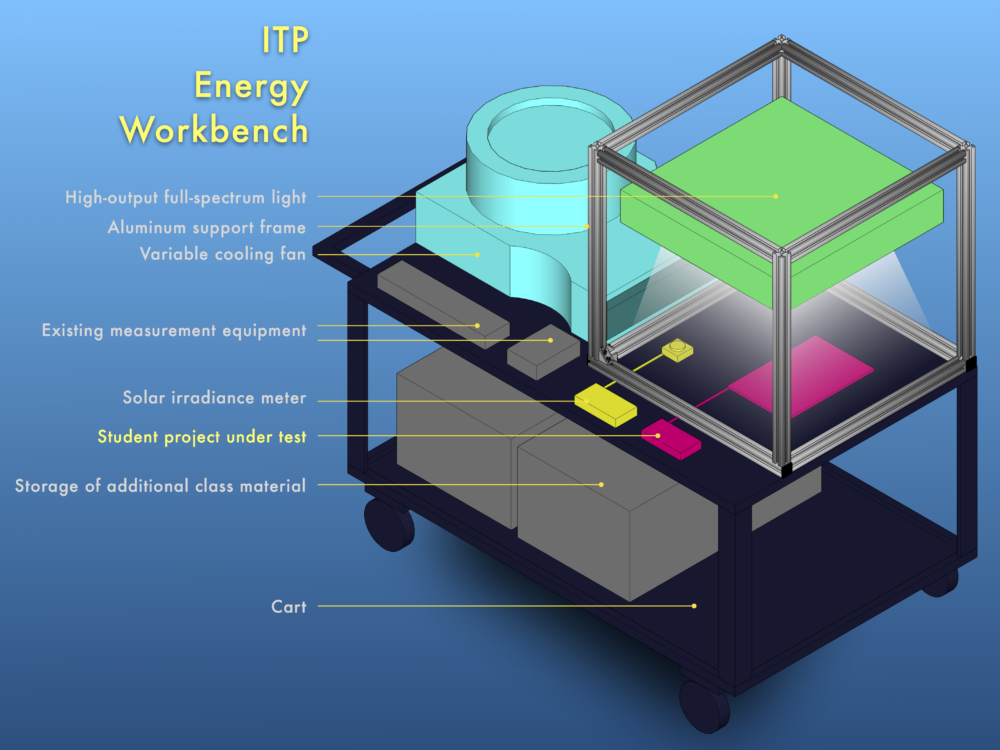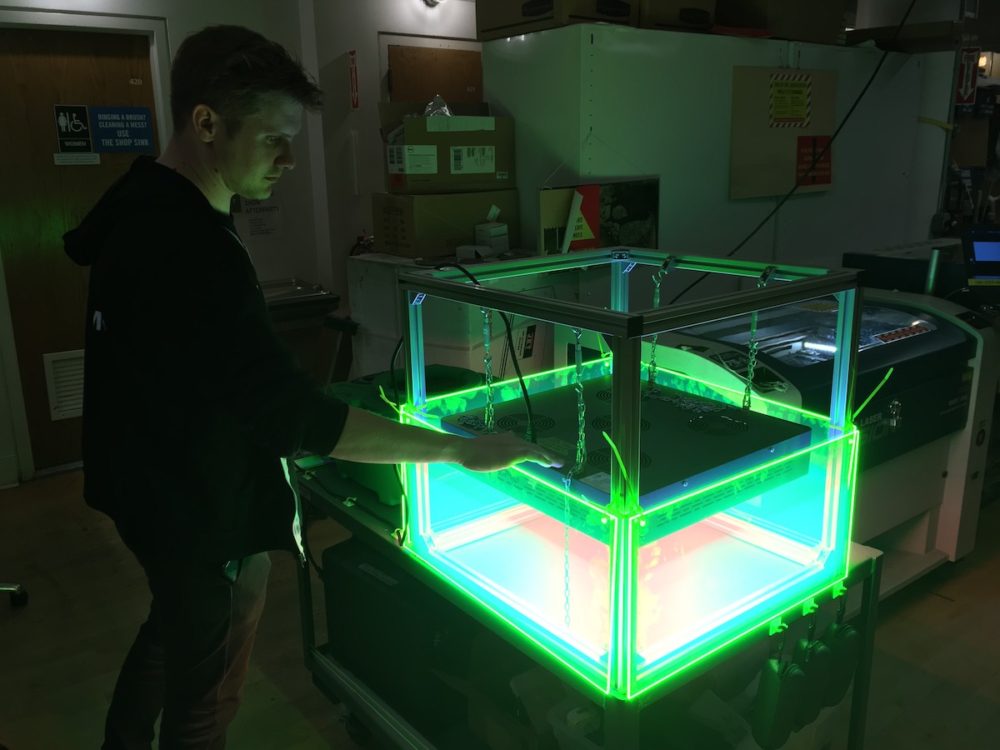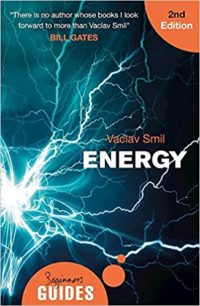Good sources of energy information. Journalism, videos, podcasts, books. Data collections. Useful hardware and software for the class.
The Information section covers books, podcasts, essays, online sources (news, blogs, videos, etc) that relate to the class.
The Materials section gives pointers on the parts, tools, and materials we use in this class.
The Measurement focuses on tools and techniques for measuring energy.
Information
Reading
Course Text
Required text: Energy: A Beginner’s Guide
Vaclav Smil (click for bio)
2017 (second edition), One World Publications
ISBN:1786071339
We’ll be using this excellent text as a the main reading for the course. It provides a wealth of technical detail in a cross-disciplinary context. In the years since its publication I’ve found no other text that strikes the same balance. Other tech luminaries besides myself (ha) are starting to catch on to this valuable author, and Smil has published a number of other works on the topic. Make sure to get the second edition from 2017! (Although as Smil himself would remind you energy transitions take a long time).
Smil’s mission is to understand and explain the quantitative data behind energy phenomena. He’s rigorously logical on subjects like the difficulty and time needed to transition from fossil fuels. We will complement this text with readings and discussions that address the social, political, and ethical aspects of energy systems, and students are encouraged to use Smil’s analysis to support or critique their own thinking on these subjects.
Additional Readings
No list of sources like this could ever be complete, but below you’ll find several additional readings and organizations I find useful and inspiring.
Blogs: Not all blogs are created equal. Consistently-good online sources for energy issues include Vox, Clean Technica, the MIT Technology Review, Bloomberg, and IEEE Spectrum. Quartz had an excellent series on energy, more recent content may be pay-walled. David Roberts, formerly of Vox, now has the excellent Volts newsletter. Less technical “green design” blogs can sometimes be OK, but often write enthusiastically about vaporware.
Sustainable Energy without the Hot Air, David MacKay, e-book. Like the Smil text, this book/site provides a tremendous perspective on energy sources and uses, with even more emphasis on running the numbers and making apples-to-apples comparisons. See also MacKay’s Ted Talk on renewables.
Do The Math, Tom Murphy, blog. I originally found this in prepping for the 2014 semester. It has a ton of well-written and clearly-reasoned posts grounded in math and physics while taking on the big questions. It’s no longer updated but remains a great resource. As of 2021 it appears Murphy has compiled his writing into a book, which I will be looking at more closely.
A note when reading energy-related news
There is a fun phrase in US patent law: “reduction to practice.” Broadly, this means bringing an idea into the real world, taking a patentable concept and creating an actionable plan for building something out of the concept.
This is usually really, really hard! Many great ideas exist in the lab, but do not make it to the real world in the form of something we regular people can use. (See also the technological valley of death and NASA’s Technology Readiness Levels.) This challenge seems especially poorly framed when general-technology media report on energy tech. For example, in 2023, many mainstream outlets reported on a paper that described using ambient humidity to generate electricity, often framing the invention as something that can pull energy from “thin air.” On the one hand, this is very, very cool! The scientists that worked on it created a real thing, that works as claimed, and is documented in a peer-reviewed paper in a reputable journal (that you have free access through NYU Library).
However, you have to dig through the paper to find that the power density of the device is at best comparable to the power in the ambient RF environment, and maybe two orders of magnitude lower; it is between 5 and 7 orders of magnitude less power dense than sunlight. In other words waaay lower than the lowest power density devices used commercially. The voltages generated are in the 10s of mV. And assuming you want to proceed anyway, the lab devices were laboriously assembled by hand in small numbers. It’s not at all clear how or even if there is a path to scale up production to levels that could have an impact on our energy use.
Rocky Mountain Institute https://rmi.org/
Leah Stokes https://www.leahstokes.com/
David Wallace-Wells https://en.wikipedia.org/wiki/David_Wallace-Wells
Pro Publica Environment https://www.propublica.org/topics/environment
For fun, here’s a list of XKCD and What If web comics from Randall Munroe that address energy:
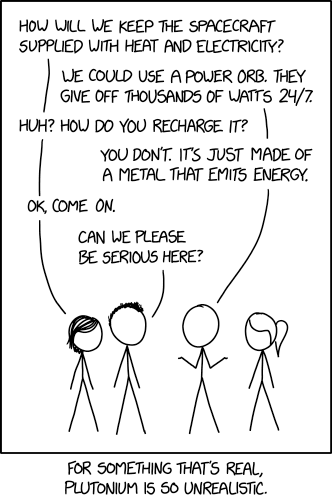
Yoda power (shows lifting mass through gravity, over time for power)
Keyboard power
Bad energy ideas
Boiling tea by stirring
Faucet power
Moon fire
Eat the sun
Plutonium
Uranium
Zippos vs Batteries
Fundamental Forces
Heat
Orders of Magnitude Power
Wait But Why has a visual overview of energy and an exploration of energy through a series of simple questions (both from 2014).
Listening
I think podcasts are a phenomenal, free (well, ads) source of high quality information. Many provide transcripts if long-form audio in English is not your preferred way to learn.
The Energy Gang
Greentech Media has become was (see below) my go-to source for energy news and their Energy Gang podcast is was required listening for the class: please listen to each week’s podcast before the next class, or an archived podcast on weeks off. A journalist, policy expert, and VC interview a guest each week, and regular listening of this will be the fastest way to get up to speed on all issues energy-related. Also from GTM, The Interchange recently came out from behind a pay wall – also excellent.
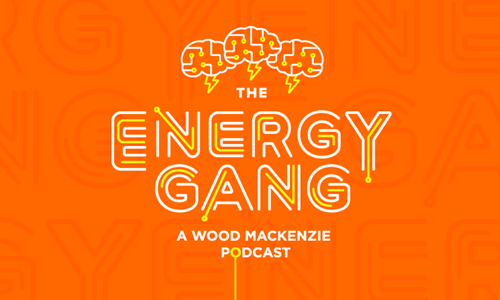
Note: In 2021, the original hosts of the Energy Gang podcast handed over the reigns to a new set of journalists and commentators (one host, Jigar Shah, joined the Biden administration in the Energy Department). So far the quality of reporting remains high, but less frequent, so for now it remains required listening.
Also recommended:
The Energy Gang runs the gamut from tech to finance to social issues and is a good all-around source. Several other excellent sources are more focused and you may find interesting depending on your particular interests.
Drilled is an excellent podcast and news source that begain by covering the origins of climate change denial. Founded by Amy Westervelt.
Canary Media was founded by one of the Energy Gang hosts.
Post Carbon Institue hosts Crazy Town and other podcasts looking at social aspects of the energy transition.
Big Switch Podcast (and Columbia Energy Policy Institute generally). See especially the work of Dr. Melissa Lott
Cool Zone Media hosts shows like “It Could Happen Here” that imagine future scenarios affected by energy and climate. Check out the sources.
A condensed audio version of Timothy Morton’s Hyperobjects (which you can read online through Bobst). Here’s a short essay by Morton introducing the concept. “Hyperobject” is a useful idea for this class (and life!) for looking at “all kinds of things that you can study and think about and compute, but that are not so easy to see directly: hyperobjects.”
Video
I’ve created a number of (I hope) helpful videos on the ITP Energy channel! These cover the technical points we might touch on in class, but in more depth. If you’re wondering “how does a rectifier work?” or “how do I charge a capacitor?” these will tell you. Below is a selection of the videos relating to kinetic energy, induction, and measurement.
Rectification in detail:
Measuring current and storing energy from a stepper:
Energy conversion and conditioning, general considerations:
Overview of stepper, DC motor, rectification, storage in capacitors, lighting LEDs:
Of course there’s a huge amount of content on Youtube, etc, some good but much bad. In addition to the video output of the outlets above, I tend to stick to trusted science sources or a few well-vetted DIYers. PBS Space Time, which I also use for the Time class, touches on the science of Energy at the far reaches of physics. Physics Girl is also excellent on energy science, as is Dr. Shini Somara’s Physics and Engineering Crash Courses.

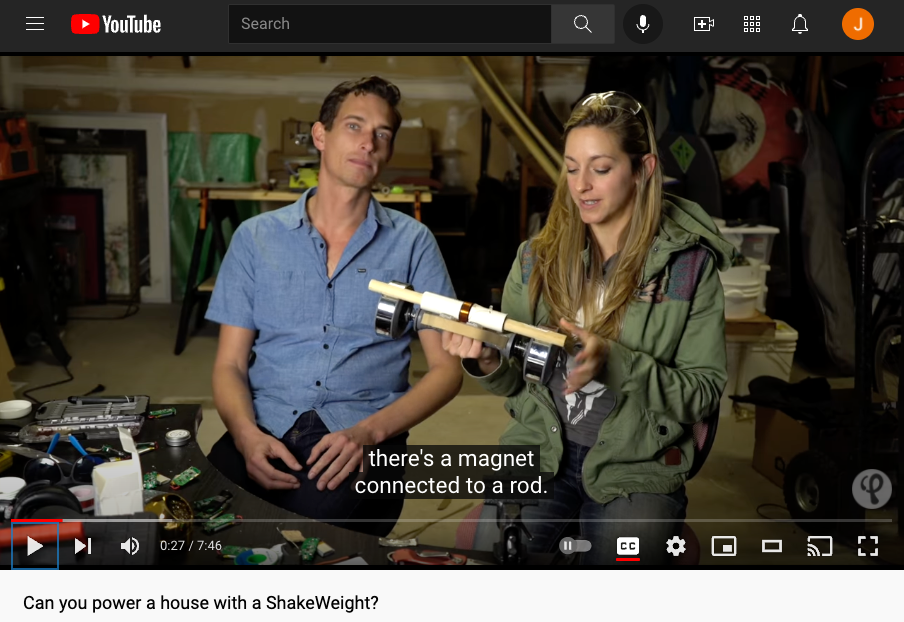
Kurzgesagt does good quick explainers on a variety of energy topics. Undecided covers emerging tech. Electroboom is way into full bridge rectifiers and shocking himself. Will Prowse covers DIY solar and rechargeable battery packs. Of the many many excellent engineering channels, Jeremy Fielding does good job covering material reuse and built a DIY generator.
This is fun:
There will be additional online reading materials assigned throughout the course. Details will be provided in the weekly syllabus.
Groups
NYU/ITP:
- ITPower – a previous student-led group for people interested in energy at ITP. Includes access to the Enertive monitoring system, project suggestions, and info on the 721 Solar Panel.
- ITPower GitHub.
- ITP’s Kinetic Sculpture Club, by Lu Lyu!
- The ER – we have some in-house solar equipment. See me about it.
- Sustainability wiki – Not much happening here, but could be a place to collect useful info.
- Physical computing wiki – Since this is in the pcomp area, some info here might be useful.
- https://www.nyu.edu/sustainability/ – NYU’s sustainability efforts. See especially the Green Grants program.
- NYU/Poly ACRE Clean- Green-tech incubator – home to several energy-related start ups.
- Benedetta Piantella and Tega Brain cover sustainability for IDM. See especially the Low Power Lab.
- Dr. André Taylor researches energy materials and low-carbon manufacturing at Tandon.
- OpenAir, run out of the NYU Game Center, advocates for smart carbon reductions through legislation and hacking.
NYC:
- Solar 1 – a long-time NYC solar advocate near NYU
- Big Reuse – NYC’s junk shelf
- Columbia Earth Institute
Energy Datasets
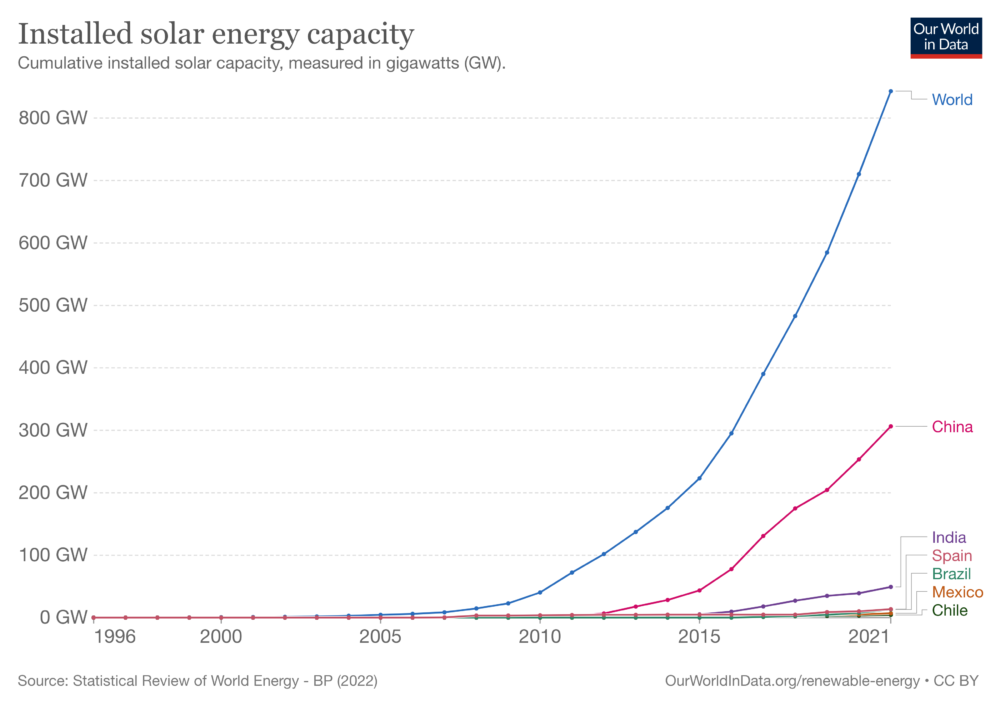
- Our World In Data is a terrific source
- Google seems to have everything in one place of course.
- US:
- http://www.data.gov/energy/ This is going downhill…
- https://www.eia.gov/electricity/gridmonitor/dashboard/electric_overview/US48/US48 But this is super cool!
- API access: http://www.eia.gov/beta/api/ (you can instantly get a key via the register link)
- http://www.eia.gov/state/ (see also this video overview)
- EU: Eurostat!
- China stats from
- a US lab: https://china.lbl.gov
- And from China: http://www.stats.gov.cn/tjsj/ndsj/2020/indexeh.htm
- India:
http://mospi.nic.in/statistical-year-book-india/2017/185Dead link – need to find updated info for India. - UN – http://data.un.org/Search.aspx?q=energy.
- https://yearbook.enerdata.net/
- CIA world factbook
- Worldbank
- BP Statistical Review (yes, really)
- IEA: http://www.iea.org/statistics/
Materials
Below are some notes on materials that can be useful for this class. Many of these parts you might already have, or be able to find in the junk shelf or via surplus supply online. No materials are required per se, but what you need will vary depending on your projects/solutions.
What I’d get first:
- DC gearmotor + crank OR Small stepper motor (Nema 17-34).
- Small solar panel ~5-15V
- capacitors: 1000uF – 1F or more, 5V minimum
- Rectifier/Diodes
What I’d get next:
- Arduino Pro Mini or other low-power micro, plus tools to program (FTDI board or ICP, e.g. TinyISP). The Nano 33 is fine, too.
- DC-DC converter if you need to go from a battery to 5V.
- Solar charge controller
- Voltage trigger or monitor ICs (e.g. 1381)
Where to buy:
AllElectronics, Electronics Goldmine, and Surplus Center all usually have a variety of used inexpensive DC gearmotors. The first two have other electronics, including solar cells and modules. Adafruit and Sparkfun have battery chargers + cells, DC converters, and some solar as well.
Note – the department has a supply of small and medium solar and some other items useful for the class. Mouser and Digikey are the main electronics suppliers for this region; Digikey in particular now carries lots of solar cells.
Energy converters
DC gearmotors
I think this is the easiest way to convert muscle power into usable electricity for a project. Start with something that’s not too small and not too large (approximately hand-sized is a good idea, 37mm is a common diameter.), 12V-24V. Avoid things with really high gear ratios (and thus low RPMs) – they’ll be too hard to turn. A 1/4” or 6mm shaft is nice. Timing belt pulleys, such as those now common in 3D printers, can make a convenient way to spin the shaft, as do scavenged window cranks.

Note – Brushes and gears will eventually wear out, and not all motors handle being driven backwards well, so this is a bit of a hack, but I think the high current/voltage you can get from this makes it the easiest place to start. Gear boxes using spur or planetary gears are common and work well; worm gears (less common) cannot be back-driven at all. It’s easy to strip the plastic or cheap metal gears in inexpensive gearboxes when using them in this way.
Stepper motors
These are my close #2 choice for motion into electricity. No brushes to wear out, easy to to turn, but output is AC (so will need rectification) and might require higher RPMs to get the power you need. A few steppers have gearboxes built in – most do not. Gearboxes fitting the standard NEMA sizes exist but are expensive. Most cranked electronics will be some variation of this – a simplified brushless motor with a gearbox. See Gravity Light (now replaced), anything from Eton, etc. Any electrical generator that uses motion as input, be it a thermal power plant (from coal to nuclear to concentrating solar power), hydropower or wind, waves, tidal, etc. use something related to a stepper motor – windings moving relative to a magnetic field to generate electricity.
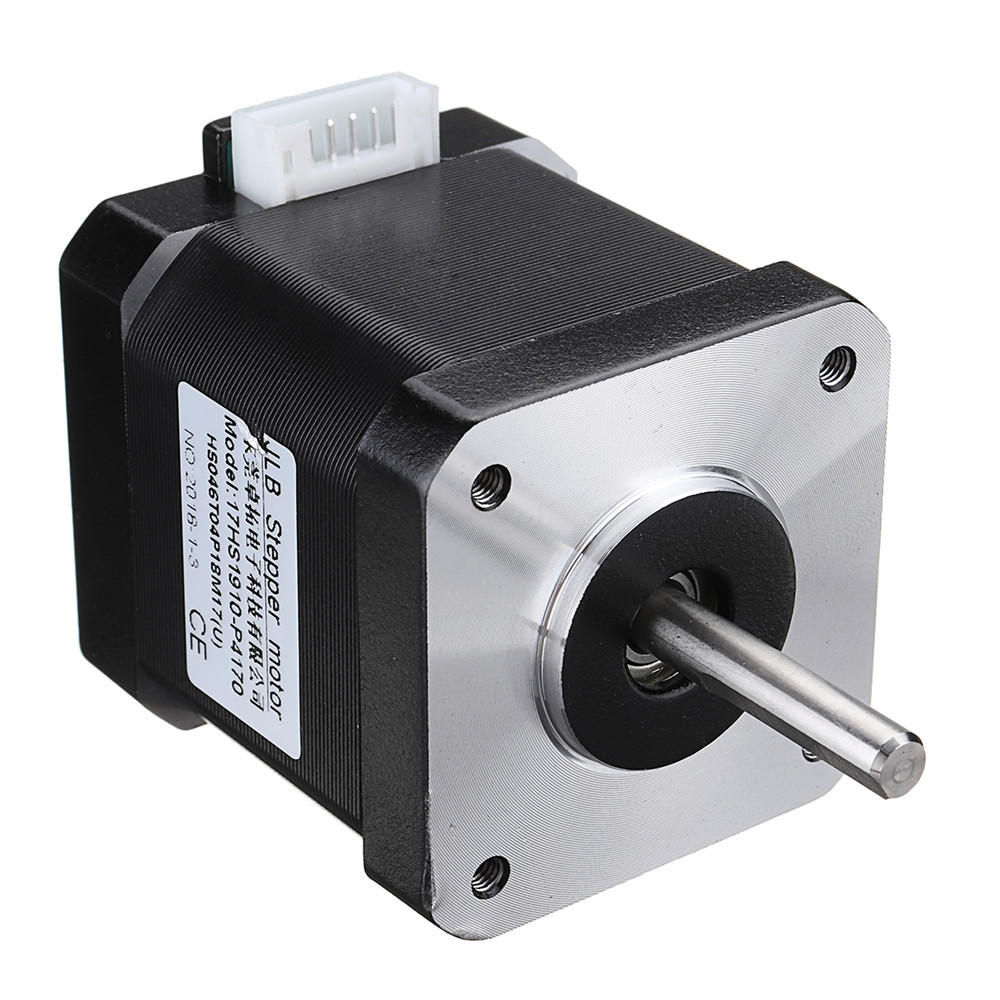
Brushless DC motors are in some ways similar to steppers, but optimized for speed vs position. There are lots of different configurations, but generally speaking, their heigh RPM and sometimes embedded electronics might make them difficult to use as generators.
Considerations for selecting a motor as a generator
DC motors and steppers are not typically specified in terms of how they perform as generators. Datasheets for actuators will tell us what kind of physical forces and speeds we can expect as output under electrical inputs. We want to know the opposite: given a physical input, what electrical output will we get. Complicating things, many inexpensive or surplus motors may have no data sheet at all, or only a few basic characteristics described.
Our first recourse (as always!) is the fundamental laws of physics – we can’t get more power or energy out of a system than we put in. If we spin the shaft of a motor slowly and with little force for a short amount of time (low energy input) then guess what? We’ll get very little electrical output, no matter how cleverly designed or efficient our generator is.
We can also use, if we have them, electrical specs for a motor to estimate how it will perform for us as a generator. We’ll consider DC motors and steppers separately. With DC motors, speed is proportional to voltage, and torque is proportional to current, and this remains true when we use them as generators.
With a DC motor, we often at least have a speed and voltage rating, e.g. “this motor turns at 200 RPM at 12V”. Sometimes there is an additional phrase “with no load” meaning the motor is not actually moving anything other than the shaft. That means if we turn the shaft at about 200 RPM, we would expect to see about 12V “open circuit voltage”, which is the electrical equivalent of “no load” – the circuit is not powering anything, rather it is “open”. Keep in mind that any inefficiencies in the motor work against us both ways, so this is approximate but gets us in the ballpark.
If we’re lucky, we might get a “stall current” rating for a motor. This is the current the motor draws when the shaft is stuck, physically unable to move, and is the most current the motor will draw. It is also when the motor is applying the most torque. (Consider that the definition of the shaft being stalled is that whatever force is opposing it is greater than the maximum torque the motor can apply, so this makes sense.) This can help us approximate the “short circuit current” we would see from the motor if we short the leads together and turn it, a condition that will feel the hardest to turn.
This also helps us understand DC gearmotors vs plain DC motors. The types of small DC motors we typically encounter will have very high RPM – typically in the thousands of RPM. But they will have very little twisting force, or torque. So they are often paired with a set of gears that reduce the RPM and increase the torque (just like the gears of a bike can do the same). Often similar gearmotors will have the same DC motor as a first stage, paired to different gear ratio transmissions to give different output RPMs at the same voltage. When we reverse engineer the gearmotor as a generator, try to imagine turning a crank at the rated RPM (60 RPM is one revolution per second.)
Here’s a great deep-dive into understanding DC motor datasheets.
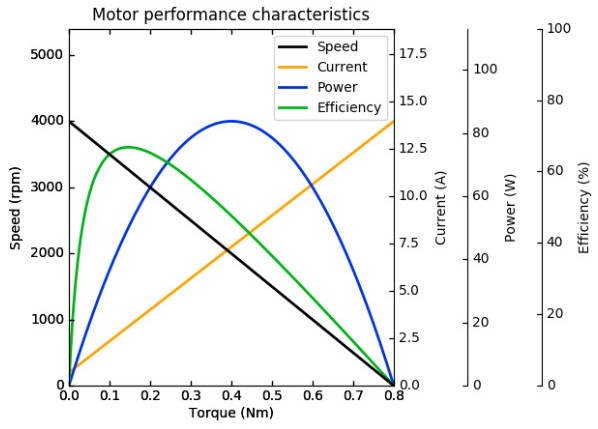
For stepper motors, things are different. Stepper motors are mechanically very simple: a cogged permanent magnet rotor is surrounded by coils of wire comprising the electromagnetic stator. The complexity comes from the driving circuit that sequentially activates coils in changing polarities to move the rotor, and their speed and torque is largely dependent on this driver. We can’t, therefore, say that there is a proportional relationship between voltage and speed for a stepper motor.
However, we can look at some ratings of steppers to select good ones for our application. The voltage and current ratings for a stepper are usually the DC steady-state characteristics of the coil itself. See for example this stepper from Adafruit, which specifies 12 volts, 350 mA, and a 35 Ohm coil winding. A quick application of Ohm’s law shows us that ~350mA is the current 12 volts across 35 ohms will produce. A similarly-sized stepper (e.g., same NEMA frame size, similar depth) could be wound differently and have a very low resistance per coil, say one tenth as much (3.5 Ohms). This motor would produce more current at a lower voltage for a similar physical input as compared to the first motor. This may or may not suite your application – in general, I find steppers with a higher rated voltage a little easier to use directly, as a slow turning of the shaft produces high enough voltages to directly drive loads like LEDs.
Steppers and DC motors are not the only two ways to arrange motors and coils. There’s an infinite variety! Brushless DC motors could work too – they’re like 3-phase steppers optimized for speed instead of precision. Here’s a great video of engineer Tom Stanton building an “axial flux” style generator – again, similar to a stepper, really – from scratch:
Faraday flashlight
Strong magnet + big coil + shaking = pulses of electricity. Easy item to find and hack, or make yourself. David Rios and the team of Xuedi Chen, Maria Saba, and Mary Fe did excellent work expanding this concept to some interesting projects.
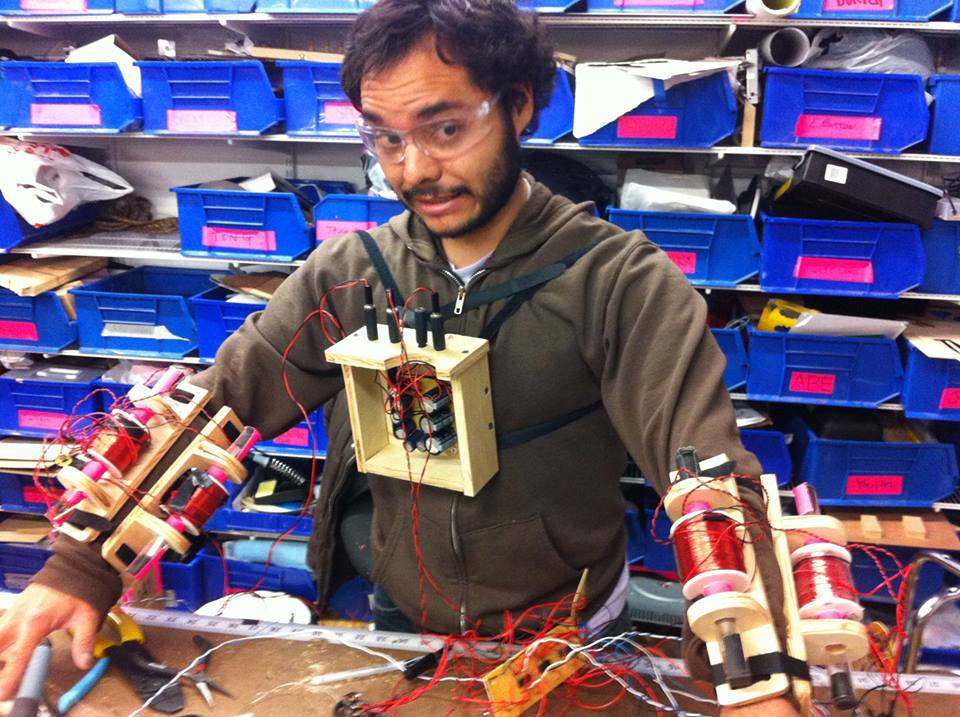
Solar
Photovoltaics (commonly called solar power) is great – pure DC w/ no moving parts and easy to use. Commercialized by NASA for the space program in the 60s, PV is used extensively on orbit, and in recent years grid-connected solar is seeing massive growth planetside. But for your projects you might need more of it than you think you will, or care to buy – even though prices are falling, it can remain an expensive way to power your work. ITP has a solar cart and several solar resources in the ER so you can try before you commit.

Solar panels aren’t magic. A small panel can’t capture a lot of energy. All well-made panels are tested under a condition called Air Mass 1.5 (AM1.5), which specifies a light power density of 1000W / m2, approximately that of bright midday sun on a clear day. Commercially available mono-crystalline Si (black, solid) will capture between 15-20% of that energy; poly-crystalline Si (blue with a camo-like appearance) will be less at 10-15%, and amorphous thin film (flexible) might be as low as 5%. So a square meter of good PV material under optimal light conditions can generate 200W electricity. While advanced materials in lab tests exceed these values, nothing you’ll buy will, so you can assess how realistic a panel is about it’s power by looking at the surface area and the claimed power output.
Assuming you’ve filtered for legitimate panels, you can normalize across a lot of different factors by comparing cost per watt. How much does a watt of electricity cost for a given panel type? Generally speaking, volume gets a discount. Huge commercial installations might pay $1/W; residential systems X. For a good, small panel, the cost might be ~$10/W or more. For example, the Voltaic panels (which Adafruit carries) come in 1, 2, 6, and 9W sizes, cost about $10/W.
With solar, you typically (but not always) need energy storage, plus electronics to match the solar to the storage. For big solar (off-grid installations, residential solar) this is a matter of specifying the off-grid or grid-tied inverter that matches your solar array size. For smaller projects, there are a few options, such as charging circuits from Sparkfun and Adafruit. Voltaic’s like of products, while expensive, integrate chargers and batteries optimized for solar.
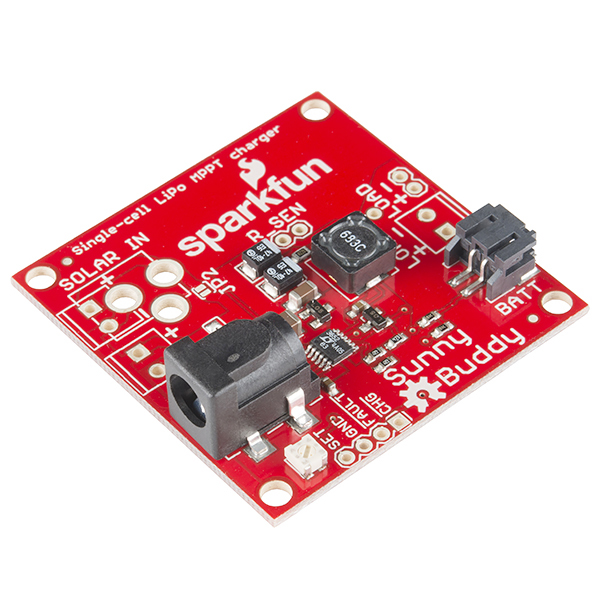
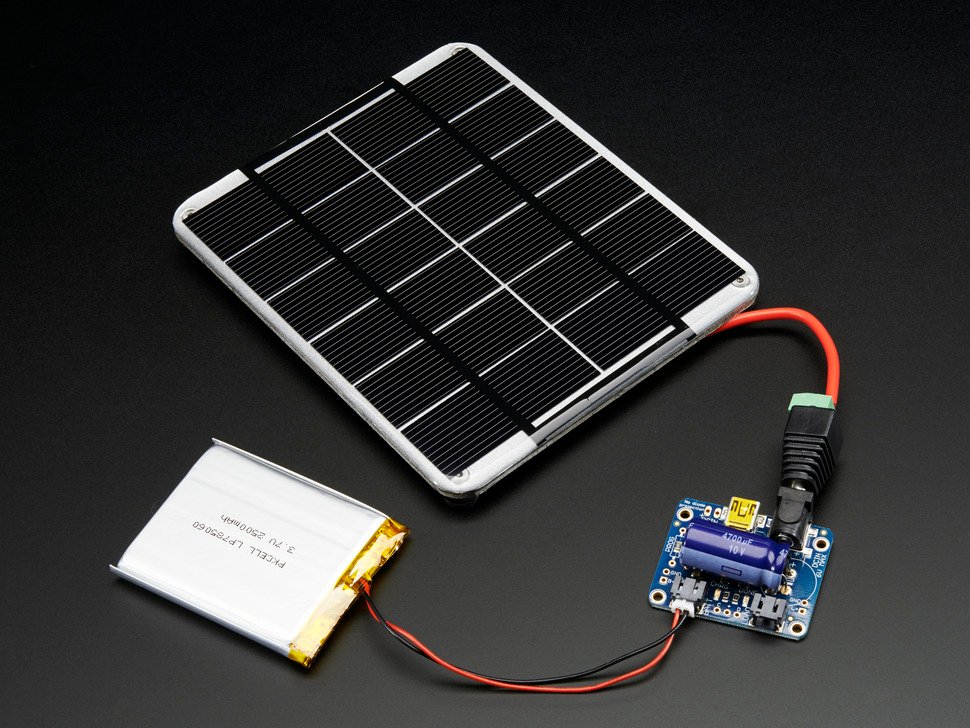
A note on solar indoors. As mentioned above, outdoor bright conditions peak at conditions of about 1000 W/m2. Indoor conditions, even in the brightest rooms, are a small fraction of this. Our eyes and brains are amazing at normalizing many different lighting conditions to look the same to us, but in terms of raw energy, inside light might be a 10% or less than conditions just outside a window.
Therefore, there are very few examples of indoor solar products and using photovoltaics indoors must be approached very carefully. Three exceptions are those waving cats (an interesting resonant feedback circuit related to the BEAM pendulums); Mova self-spinning globes (btw these are NUTS! The PV is inside an opaque looking globe decal and they push against the magnetic field of the actual earth!); and Electronic Shelf Labels, some of which use e-ink and solar.


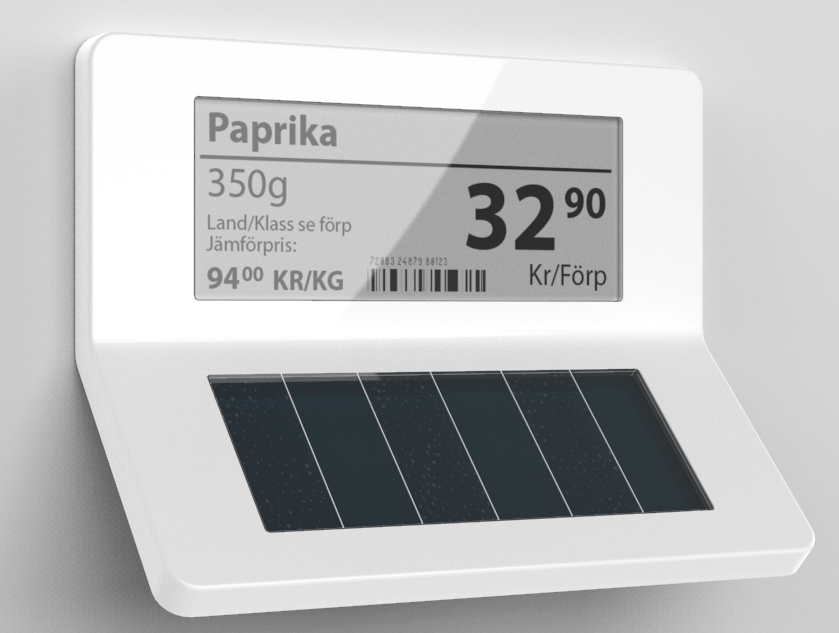
Solar design resources: Solar isn’t just the panel – you need energy storage, charge control electronics, voltage regulation, and a variety of mundane-but-very-important safety devices like fuses. There are a number of projects that list all the components necessary for a complete off-grid solar project.
Voltaic’s blog is an excellent resource.
Before the crypto winter, weird, unexplained solar-powered antennas were popping up in Utah. They are probably solar-powered Helium miners. Here’s a BOM for building one. You may have no interest in Helium mining, but this shows a computer and networking gear running unattended on solar.
IDM’s Low Power Lab has documentation on the Giga Node solar network device and Solar Powered Media.
NYC developed open-source solar powered flood sensors, documented here. See the BOM, and also this great “How to Assemble” guide.
Other Sources
Possible but harder to use:
Thermocouples/Peltier junctions
Like solar panels but for heat – solid state devices that produce electricity when there is a heat difference between two sides. They also work in reverse and form the basis of small electrical heaters or coolers. The Carnot Limit tells us these probably need higher temperature gradients than you have to work well. Think stuck between a toaster and an ice cube. Or a small flame and the Alaskan tundra, where they power sensor networks on gas and oil pipelines.
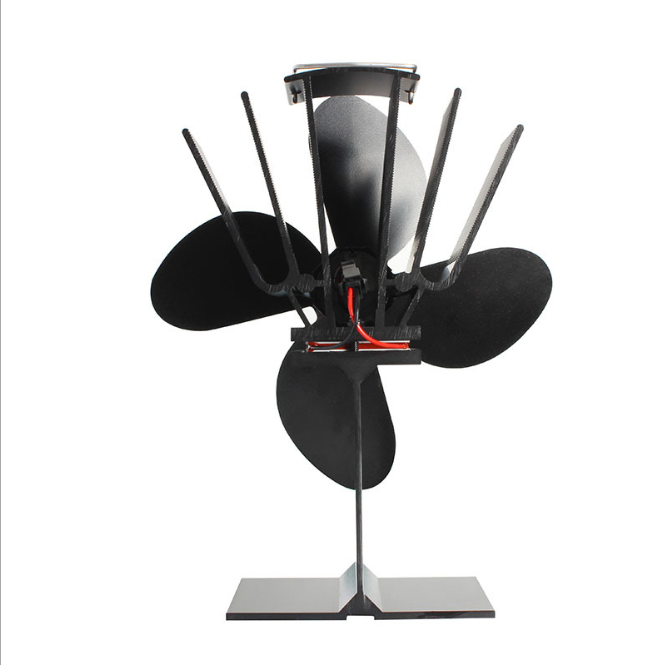
Piezo
Piezo energy scavenging sounds great in theory – slight motion or stresses on an inexpensive piezo crystal or film can generate impressive voltages. But they’re usually very current limited, and so very low power. Plus fragile. Putting crystals into shoes, pavement, welcome mats, etc., has been proposed dozens of times, but implementation usually falters. More realistic (and used in the real world) are low-power sensors that use high-vibration environments like factory machines or bridges. These are precisely tuned to the vibrations they are supposed to harvest, and might cost nearly $100 to harness a few microwatts.

RF scavenging
Yes, the first crystal radios were powered by the radio waves they received, and fluorescent lights glow near power lines. But while we’re awash in RF energy – AM, FM, Wifi, 5G… the inverse square law and the like means the current we can produce from anything more than a few centimeters away is very small (although not unusable – it’s just hard to do and low power).
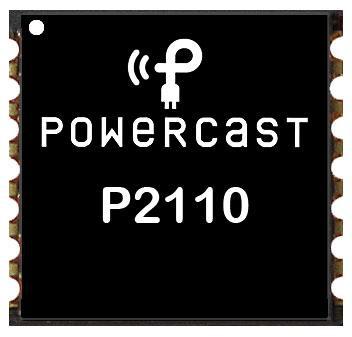
This is not to be confused with wireless charging, where dedicated resonant coil pairs can transfer significant power wirelessly over short distances. Longer-distance wireless charging is also under development, with complicated targeting and beam-forming, but when it comes, it will at the expense of efficiency.
Storage
Batteries
Batteries. Are. Awful. Unlike most other equipment, they’ll go bad if you don’t use them all the time, their performance is nowhere close to what we’d like to see (what % of your favorite device – volume + weight – is the battery?), they’re not getting better very fast, and they can explode and burn down your house or plane or hoverboard. Seriously! For just one example, e-bike battery fires have gotten so bad in NYC that the mayor is getting involved.

That said, if you buy a battery, have a specific project in mind for it; trade off weight and cost (lead acid: heavy, cheap – lithium: light but more expensive; NiMH: in between, etc); match the charger or charge circuit to the chemistry and number of cells you are charging; and have a plan to recycle your battery when it inevitably fails. Their are some nice 5V lipo chargers and batteries from Sparkfun and Adafruit that would power small projects and play nicely with solar or muscle-generated electricity. I currently have a limited supply of Voltaic battery packs that combine solar-tolerant charging with lipo chemistry.
Lately there’s been a boom in portable “generator replacements” that combine lithium batteries with electronics for providing a mix of household AC (120V in the US), 5V USB, USB-C Power Delivery, and 12V outputs. While still expensive, these can be useful for powering electronics projects and not having to reinvent the wheel. See additional notes on selecting these are below.
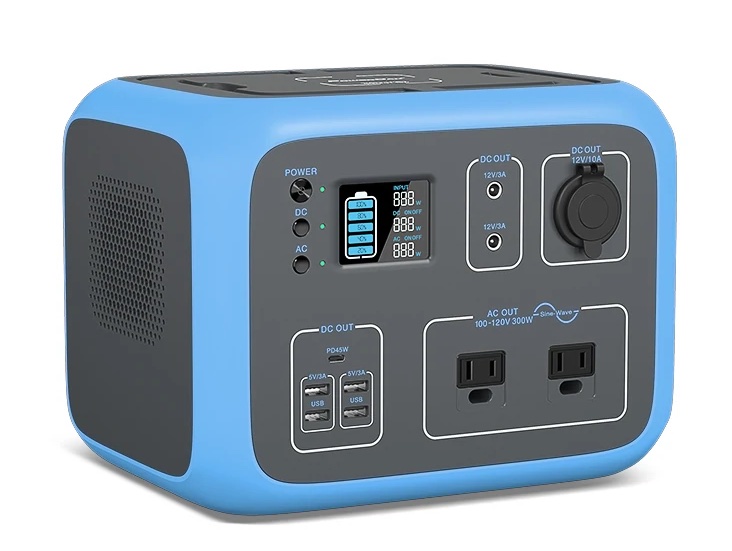
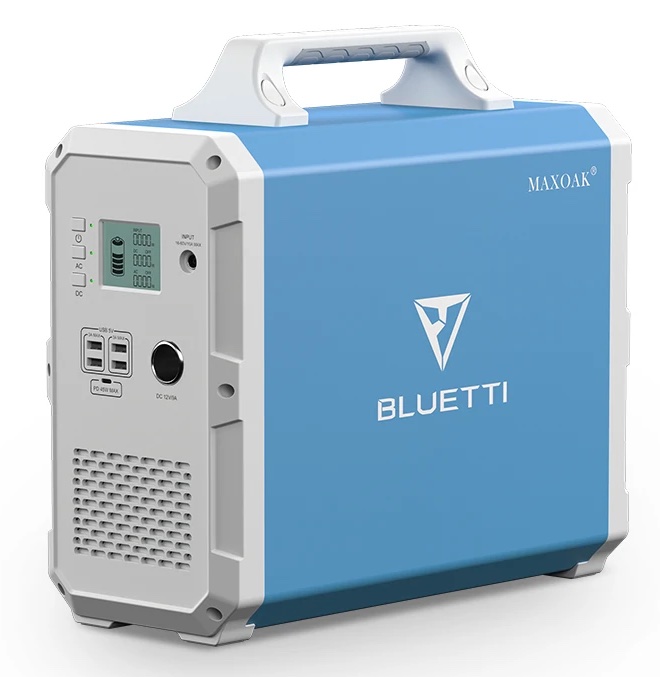
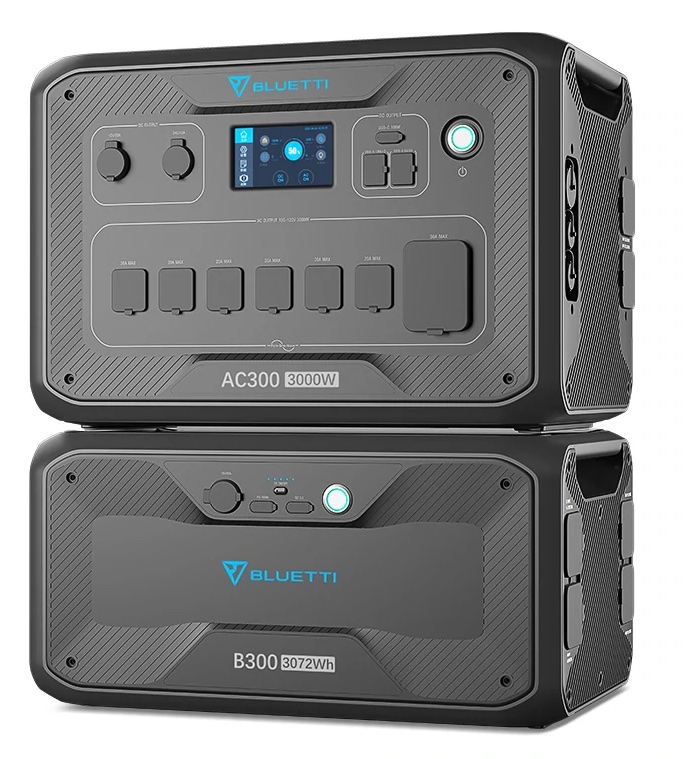
Capacitors
These aren’t great either, but less bad than batteries (storing electricity in general is hard!). Capacitors don’t wear out, they charge and discharge very fast (power density is high), but are shockingly less energy dense than batteries, and more expensive (although they are improving faster than batteries). ~1F 5V capacitors (usually called super- or ultra-capacitors) is easy to find and can do some interesting things.
Note – capacitors can be dangerous too, particularly high-voltage ones found inside some equipment. Because they can retain their charge for a long time, and discharge all their energy almost at once, these can cause a large shock or spark if shorted.

That’s about it for electricity, but you can store energy in any number of other ways, such as compressed air, elevated weights, flywheels, biomass, etc. Small hydrogen fuel cells have become available on the consumer market in recent years.
Notes on sourcing and sizing storage for off-grid projects
I drafted the following note for a friend asking about powering an art installation in a remote location, “off the grid” so to speak. Info of this kind is a common request, so I’ve included it here to help NYU students in a similar situation. Costs and links were current as of 2022.
Assume for the moment that you’re basically looking at running something in the remote location from a battery, and potentially recharging it at the location off grid. It’s gotten a lot cheaper to do that, but unfortunately it’s still not particularly budget-friendly. Some parameters to help you size and cost parts out:
First you need to know what the power requirements of your project are in watts. This can be measured directly with a plug-in meter like a “Kill-A-Watt”; deduced from product specifications; or just ball-park guessed based on similar items. The simplest scenario is when you plug everything in as an alternating current (AC) load. It becomes more complex if you have a mix of AC and maybe various direct current (DC) voltages – 5V USB-A, higher-power USB-C, etc. So for the moment, let’s imagine you can estimate your power as 100W AC.
Two thing to consider about any power estimate. One, the power estimate is an average. The actual power consumption will range above and below the average, and this can vary quite a bit depending on the particular equipment. Some devices will use a lot of power when starting up, and less when they are running. Some components might alternate between being active and idle. So the 100W example is an average over some period of time, and some consideration may be needed particularly regarding the maximum power you might need.
Second, your overall project may not run constantly. Perhaps your project is on for, say, a few hours a day. Or for 15 minutes every hour. Or all night, but only on weekends. Or one hour once a year. Considering the “duty cycle” of your project affects how much energy it needs in a given period of time. A project averaging 100W running 24/7 will have different energy requirements than one using 100W for a few hours a week that is otherwise idle.
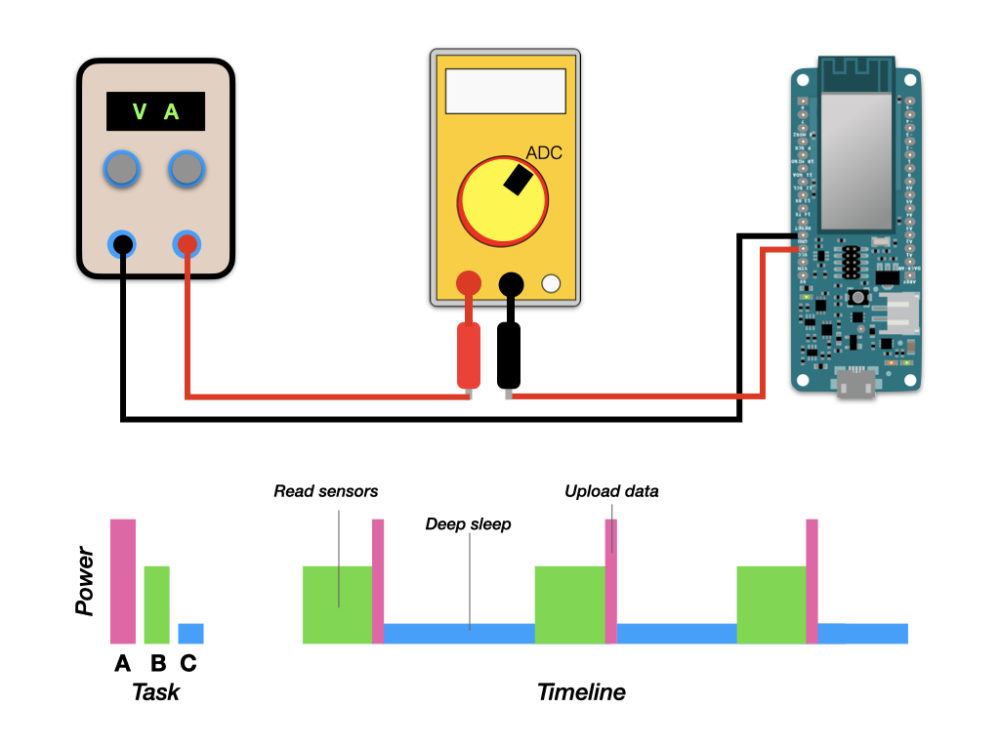
Taken together, the average power and duty cycle can help you create an energy budget for your project over an appropriate time scale. Energy is measured scientifically with joules, but typically electronics will use an equivalent term, watt-hours (Wh). A 100W project running for 2.5 hours a day would need 250 Wh of energy daily.
Now you can begin to determine how long you could run that load from a portable battery pack. Any pack will have a battery, plus electronics to connect the battery to what it is powering – for example an “inverter” to create AC from the battery’s DC, or to step down the battery voltage to 5V DC, etc.
Taken together, the battery and electronics can be considered to have:
1) An energy capacity, in “watt-hours”, basically meaning the size of the battery; and
2) a maximum power, in watts, meaning how fast that energy can safely be taken out of the battery.
Luckily, there are many relatively new battery packs designed to run household AC loads plus various DC loads via USB or 12V. Unfortunately, they’re not very cheap. The going rate is $1/watt-hour. And because of the way batteries work, generally larger batteries will be coupled with higher-powered electronics, so there is also a $1/watt relationship.
A reliable brand is Jackery – consider the Jackery 500. It costs $500, has a 518 watt-hour battery and can provide 500 watts continuous power (1000W for short periods). The smaller 300 ($300, 293Wh, 300W) and the larger 1000 ($1000, 1002Wh/1000W) have almost exactly the same cost/watt-hour and cost/watt figures. Almost any other reputable brand has the same ratio.
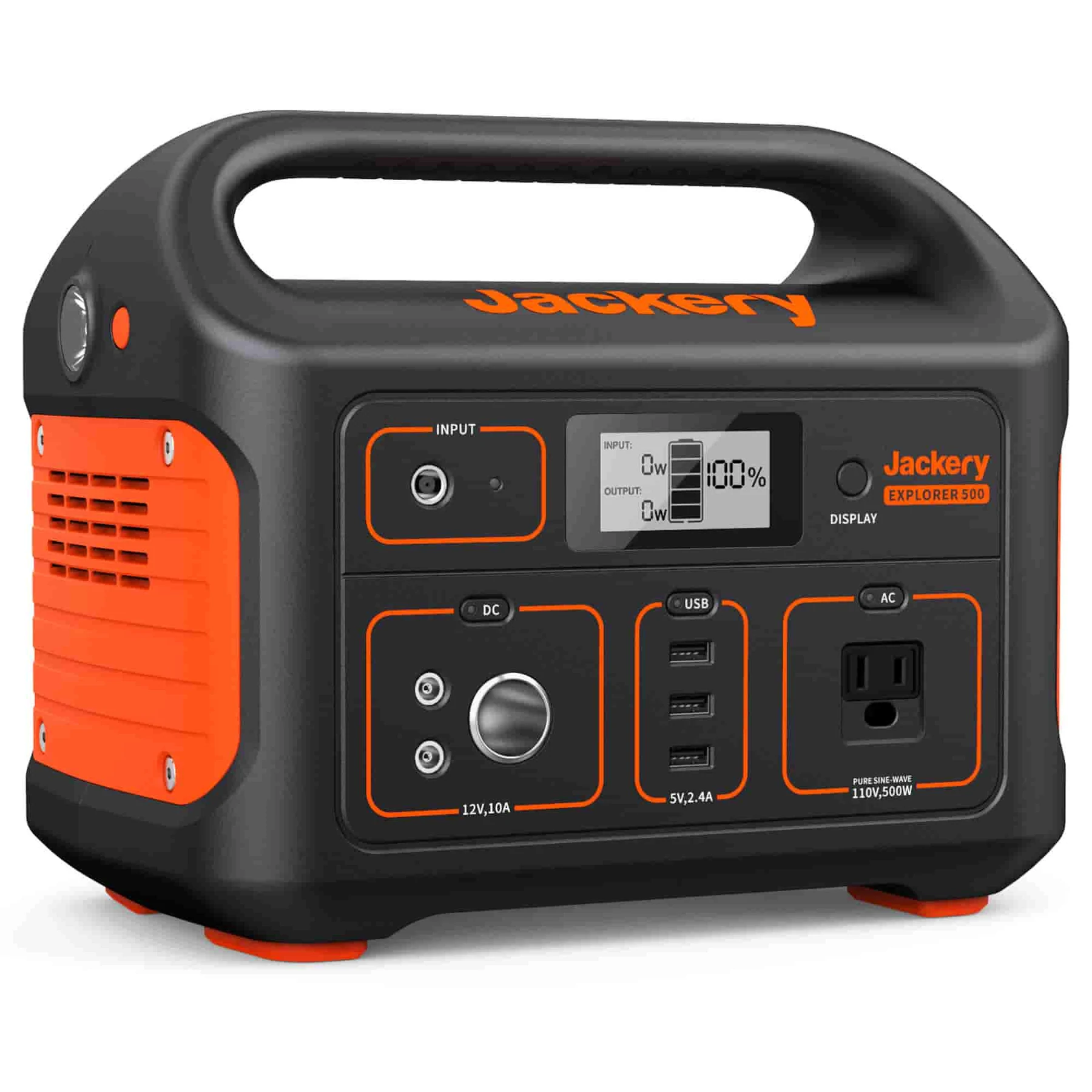
So your 100W example project could run for about under 10 hours from the Jackery 1000, or 5 hours from the 500, or 3 hours from the 300 (a little less, because the usable energy is usually less than the stated capacity). If your project instead needed 1000W, it couldn’t run at all from the 300 or 500 (they can’t provide the power), and only for an hour from the 1000.
Separate from that, you could look at solar (I would look at solar over wind or anything else that moves or needs to be carefully installed – solar is relatively forgiving). Solar panels cost on the order of $1 – $3/watt at small scales. The total energy they could capture in a day would vary tremendously based on conditions and location, from almost zero to about 6-equivalent hours * the power rating (good location, good day). So a 100-watt panel might get you 600 watt-hours in great conditions, and less in most real world conditions. Now you could begin to balance input and output and specify a system that might be energy neutral over the course of the installation. Also not cheap.
I hope that’s enough detail to get you started. Reducing your power as much as possible is the first step. And consider if making something intermittent is a possibility. A piece that runs for one minute on the quarter hour uses 1/15th the energy as the same thing running continuously.
Finally, I’ll note that a battery that’s just sitting around is a costly waste – something for you to consider might be a way to invest in the resource for the department and make sure it gets a lot of sustained use. That’s the only way to make the cost/use go down that’s under our control.
Other parts
Rectifier and/or diodes: A rectifier is something that converts AC to DC. A bridge rectifier is just four diodes in a convenient package – you can get some or easily breadboard your own.

LDOs: Depending on your project, you might want to take more control over how voltage is regulated for your microcontroller. “Low-drop out” regulators need less of a difference between the input and output voltages, and can be more efficient than a stock 7805 or similar.

DC-DC converters: A “step up” (get it?) from LDOs, DC-DC converters act like mini switching power supplies, and can efficiently step a DC voltage down (buck) or up (boost). So you could run a 3.3 volt microcontroller from a single 1.5V battery. Or take your 7-15 V solar and get 5V for logic without wasting half or more as heat. See especially Adafruit’s power converter category.

Low power MCUs:
If your project doesn’t need all the functionality of an UNO, don’t use one. Arduino Pro Minis use less power in idle (different voltage regulator and no onboard USB), are easily breadboarded, and once you have the FTDI board, are as easy to use as any Arduino. They’re also cheap! Trinkets are also low power, but take a bit of setup and have fewer IO pins. With a little more setup (an inexpensive programmer + small mods to the arduino IDE) you can program the ATTiny chips raw and take control over all the components in your project. Most smaller boards are available in 3.3V versions. Or you could explore entirely different MCU families that might offer better energy performance for your application (e.g. NXP). You can also save power by going slower (8Mhz instead of 16 for example).
Many, many (too many?) new options exist for low-power wireless boards. These include the popular ESP32 and ESP8266 variants. I’ll be exploring these this semester. I like the ones from Sparkfun and Adafruit that integrate a battery connection and charge circuit.
Voltage triggers: Used extensively in BEAM circuits, these can cause an action to occur when a capacitor or battery has charged past a certain level. The “classic” Panasonic 1381 is still avialable from Solarbotics; Mouser and other suppliers carry equivalent models from Maxim and ON semiconductor. Search for supervisory circuits in three-lead through-hole packages.
BEAM electronics – simple, microcontroller-less solar powered circuits – are interesting for this class, but require a bit of arts and craft plus analog electronics. They’ve recently been taken next level by the excellent work of Mohit Bhoite, shown below.
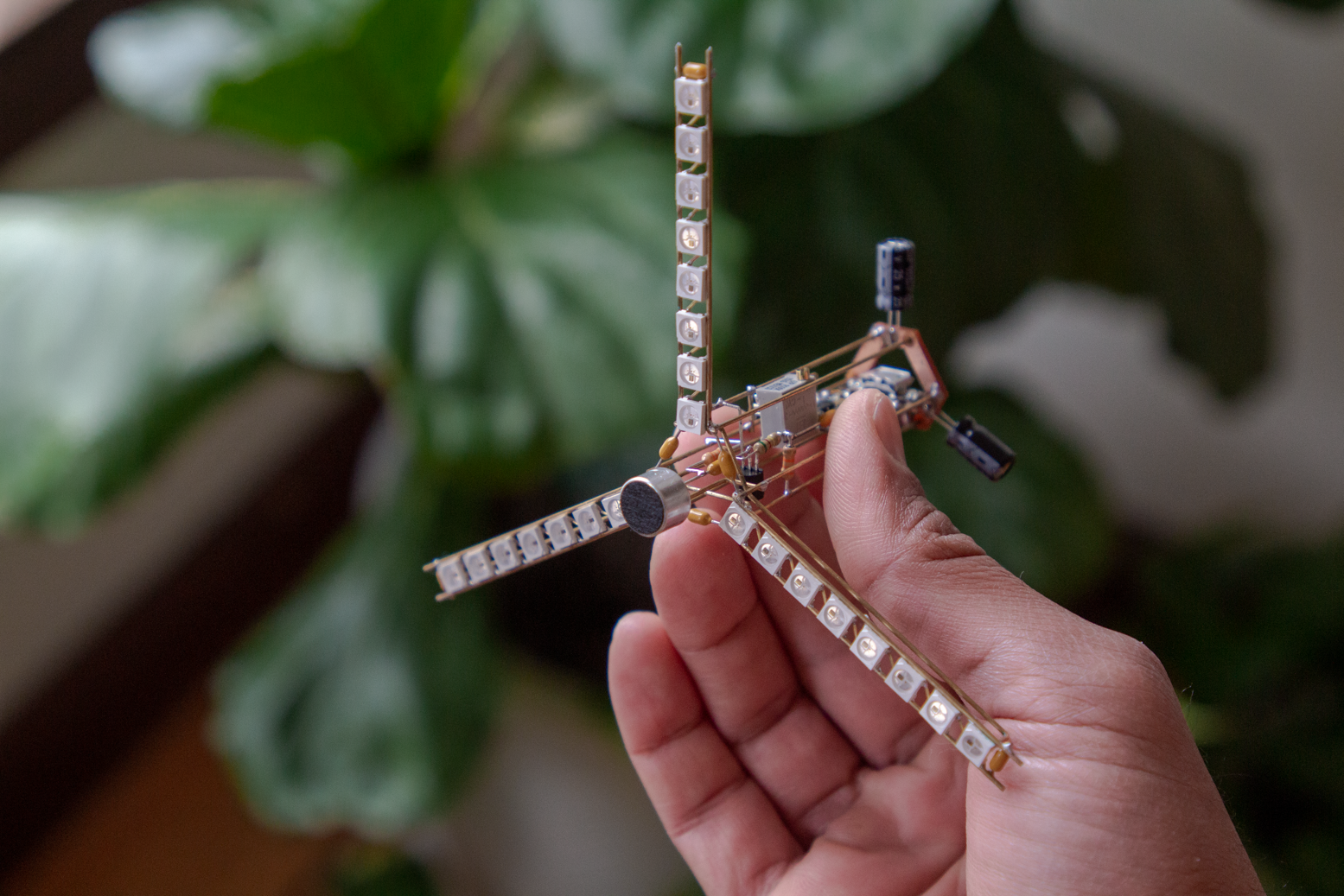
Measurement
Estimating
Before we even get to direct measuring, there is estimating: making a reasonable guess about how much power something uses (and therefore how much energy cumulatively over time). All electrical devices say on them somewhere how much power they use, usually on a label near their electrical cord, or on the detachable DC power supply or charger. These will be a maximum rating – read it as, ‘this device will draw no more than X amps/Y watts’ – and is used to make sure you don’t overload circuits.
Some devices will steadily use approximately the stated power all the time, but others, like a refrigerator with a compressor that cycles on and off, will vary over time, so it can be hard to estimate long-term energy use just from the electrical rating. Large appliances in the US may have an EnergyStar rating that predicts the energy used in a year.
Outside of device labels, power and energy ratings can be found if you look for them. Food has an energy content listed on the nutrition label (Calories – the capital ‘C’ is significant, as it translates to kilocalories – or Joules). Even old stationary bikes and rowing machines usually had a watts (or ergs or Calories) display; new ones have the same and more. Vehicles have power ratings in kilowatts (kW) or horse power (HP). Batteries in all kinds of devices, from portable electronics to electric vehicles, have capacity ratings in watt hours. Country-level energy data is available from several sources listed in the resources on this page. This kind of information can be used to make informed estimates of energy and power.
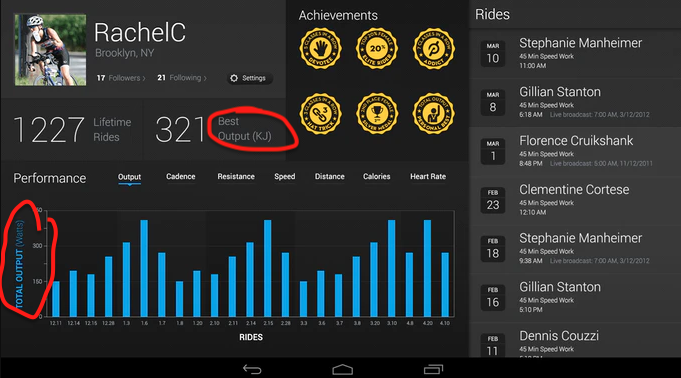
Multimeter
You probably have a multimeter from physical computing, and you can use it to indirectly measure electrical power. Power, in watts, is the product of current and voltage. If you are working with a steady DC device (like a 3.3V microcontroller), then current is proportional to power, and you can use the current measuring capability of your multimeter. From that, if you also track how much time that power is being used, you can quantify total energy (which is the product of power and time). If your project changes between several states (say, sleeping, reading a sensor, and transmitting the reading via LoRa), then you’d need to measure the current needed for each state, and the time in each state, to compile a complete picture of energy used over time (or in other words, the average power).
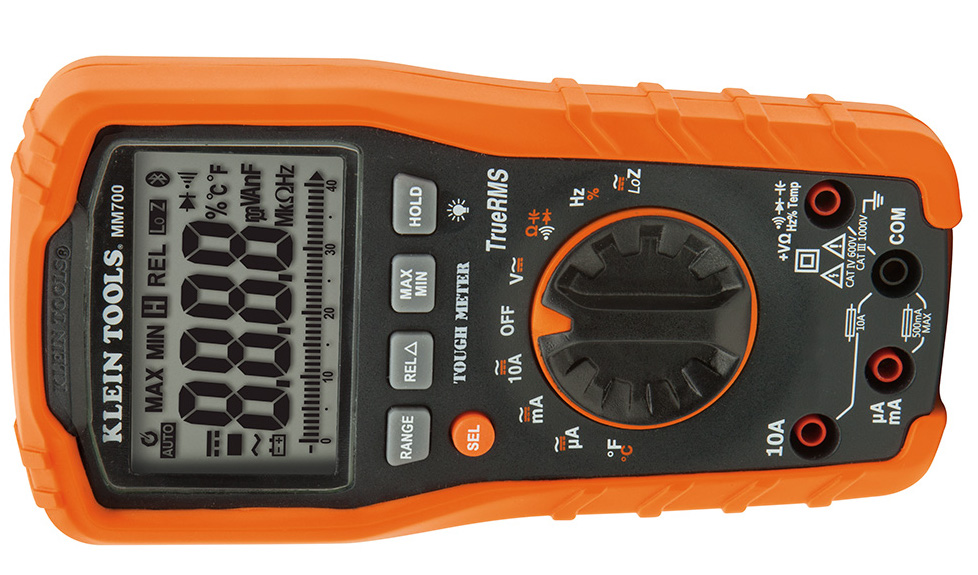
Single AC Device
Measuring alternating current is the same in principle, but complicated by the changing AC voltage, and the fact that current can be out of phase with voltage in some circuits (especially when motors are involved). Generally you need to sample both the current and AC waveforms at a high frequency to measure the energy. The Kill-A-Watt by P3 International was one of the first devices with an energy tracking read-out. It sits between the wall socket and your device, and tracks real time power, total energy used, and other factors. Today there are a lot of similar products, including many with wifi.

Multiple AC Devices
There are handheld energy meters for AC, and many different types of built-in AC energy monitoring for homes and commercial spaces. ITP has worked with Enertiv, an NYU start up; built it’s own current monitors; and I’ve installed IotaWatt in my own home. These systems, and similar alternatives, use a plurality of current sensors to monitor multiple circuits in a building. This can be cumbersome, which leads to solutions like Sense and competitors: they monitor a single electrical supply, such as the mains connection to a house, and attempt to use machine learning to determine which devices are on at any given moment. This is a developing area.

Current measuring sensors
Current sensors like the INA219 (typically I2C devices) and many other devices can report current to your project, allowing you to track energy use in real time.
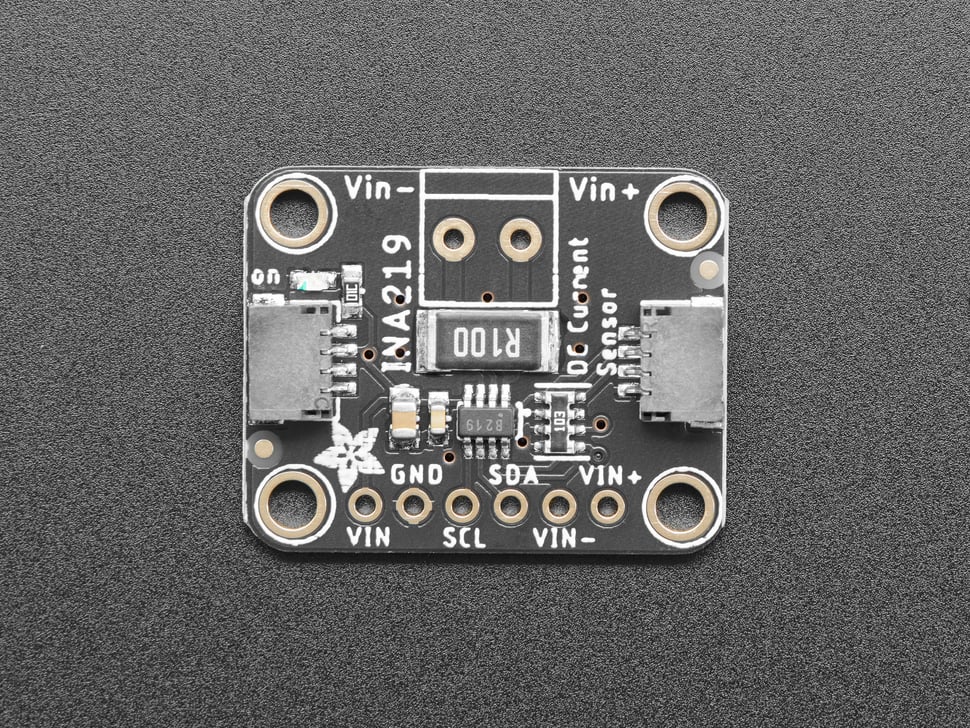
USB Power
There are a lot of cheap (~$10) devices that display how much power a USB port is providing to an attached peripheral. These are really handy! I have the “MakerHawk” but I suspect most are the same. Some get fancy, with bigger displays, and some support newer USB-C, etc., but as long as it displays current you’re pretty good. Get one!

USB is great for providing power to attached devices, but the specification has grown much more complex from the early days of “5V, 500mA max”. The current “Power Delivery” protocol can deliver up to 100W at several different voltages bidirectionally. Here are some notes on USB-C Power Delivery.
If you want to power your project with USB-C PD, you need hardware that can negotiate the voltage, like this doo-dad.
Bench power supplies
A bench power supply is very useful when considering how to power an electronics project. They are typically variable, say between 1 and 30 volts DC. They display current in real time, and they can be set to limit (or clamp) current to a specific value. Previously the domain of labs, reasonable bench supplies have gotten much less expensive. If you do a lot of prototyping I highly recommend one.
Solar Testing
Testing and measuring solar presents unique challenges. Indoor light, even bright sunlight through a window, does not approach the power of outdoor light, so simply finding a place to put a delicate prototype to see if it might work is difficult when working with solar. ITP has a dedicated bench for testing solar projects that includes tools for general energy measurement (such as Kill-A-Watt type devices), a tool for measuring light power in watts/m2, and a powerful light that approaches outdoor light levels.
